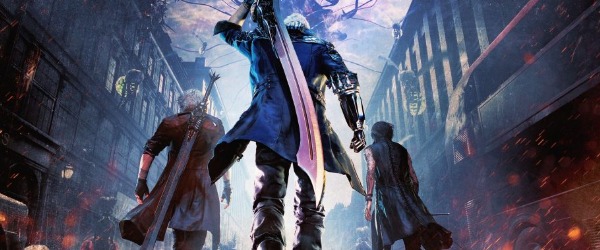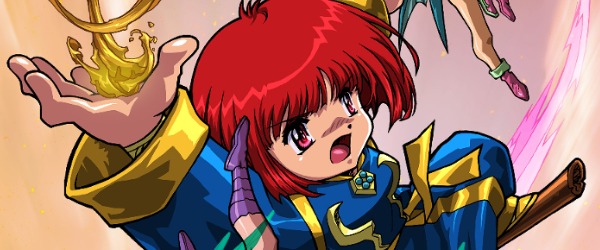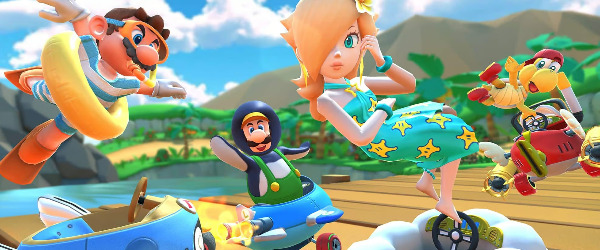History of Metal Gear: Becoming an Icon (Metal Gear Solid) - Article
by Taneli Palola , posted on 13 November 2017 / 10,608 ViewsAfter the release of Metal Gear 2: Solid Snake in 1990, the series went into an extended hiatus despite plans of another entry dating back to at least 1994. During this time Hideo Kojima focused on a number of smaller profile releases. Among these were a re-release of his earlier game Snatcher for the PC Engine; the adventure game Policenauts, which would become something of a cult classic in the west, although it has never been officially released outside of Japan; and he worked on three games in the Tokimeki Memorial dating sim series between 1997 and 1999.
Still, Kojima always planned to return to the Metal Gear series, having begun pre-development on another title in 1994 for the 3DO. Those plans eventually fell through when the system was discontinued, and the game's development was instead moved to the then-new PlayStation console. This change of platforms would prove to be one that console generation's most important moments.
Metal Gear Solid: Into the Mainstream

Work proper on the PlayStation version of the next Metal Gear began in 1995, now finally under the name the series would become famous with – Metal Gear Solid. The slight alteration to the series' original title was made because the first two games weren't that well known in the west, especially after the relatively long break between new games. The word Solid was decided upon to signal the series' jump from 2D to 3D.
Metal Gear Solid also saw some other important creators join Kojima's project. Notably this marked the first time Yoji Shinkawa worked as the lead character and mech designer for the series, although he had already worked with Kojima on Policenauts as a debugger a few years prior. Shinkawa's unique style would eventually become practically synonymous with the Metal Gear Solid games, and he would go on to serve as the lead art designer in all the Metal Gear Solid games directed by Kojima. The two have worked together on almost all of Kojima's projects since 1994, including the upcoming Death Stranding.

One of the key points of focus for Kojima and the development team was to make the game feel as realistic as possible. To this end the team visited demonstrations on various weapons, explosives, and army vehicles, and even had a weapons expert as a technical adviser during development. Furthermore, to make the game feel as believable as possible, countless minor details were constantly tweaked throughout development to appear unique to the player.
Most of the game's music was composed by a team of Konami's in-house composers. However, there are two notable exceptions to this. The first is the game's vocal theme, which plays during the end credits, called “The Best Is Yet To Come”. This was composed by Rika Muranaka, who has since worked on the music for several games in the series. The second is the famous “Metal Gear Solid Main Theme”, composed by Tappi Iwase. The entire soundtrack is excellent, and filled with great pieces, but these two are the ones that often come to mind first.
The creation of “The Best Is Yet To Come” is especially interesting as it came about after Kojima said he didn't want an English language song in the game, at which point which Muranaka suggested writing a song in Gaelic instead. It's sung by an Irish singer called Aoife Ní Fhearraigh, with the lyrics first written in Japanese by Muranaka and then translated into Gaelic.
The move to much more powerful hardware also allowed Kojima and his team to introduce significantly more complex gameplay and storyline elements to the series. Importantly, Metal Gear Solid developed the character of Solid Snake far beyond what had been done in prior games, and introduced a new major antagonist with Liquid Snake. It is also the first game to feature Meryl Silverburgh and Otacon, two of the series' most important recurring side characters. This was naturally also the first series entry to feature voice acting, in the process turning David Hayter as Solid Snake into one of the most iconic voices in the industry.

The game's story sees Solid Snake once again coming out of retirement to infiltrate a remote army facility called Shadow Moses, located in Alaska, where a special forces unit called FOXHOUND has seized control of the facility and is threatening to use Metal Gear REX against the United States if it does not concede to its demands within 24 hours. Solid Snake is called upon to neutralize the threat once more.
In terms of gameplay Metal Gear Solid feels like a logical step from the previous titles, keeping its core stealth-based gameplay intact, while introducing new elements and adapting old ones to make them more suitable for the 3D environments. Many of the features were familiar, but the ways they could be used were updated and given more variety. Things like the radar, the cardboard box, and other elements feel very similar to their counterparts in the 2D games, just translated into 3D gameplay.

While Metal Gear Solid made it somewhat easier to deal with enemies head-on, the best way forward was still to avoid detection as much as possible. The gunplay and combat are actually one of the game's clumsier elements, and the stealth approach is generally much more satisfying, with plenty of tools and opportunities being given to stay hidden. Not to mention that trying to just shoot your way through levels will more often than not result in a game over screen.
Kojima also wanted to introduce certain new elements, such as the ability to hide enemy bodies and a score that would dynamically change based on the player's current situation, but they proved to be too difficult to achieve on the PS1 hardware. However, these ideas would eventually be implemented once the series made its debut on the PlayStation 2.
The first time Metal Gear Solid was officially shown to the public was at E3 1997, with a trailer showcasing the game's graphics and gameplay. A playable version was eventually shown at the 1998 Tokyo Game Show. The game had an extensive marketing campaign, featuring television and magazine ads, free demos, and more. This ad campaign was at the time one of the most expensive of its kind for a video game.
Metal Gear Solid was eventually released on September 3rd 1998 in Japan, and a month later in the US, with the European release coming early the following year. It received rave reviews upon release and quickly became one of the most commercially successful titles on the PlayStation. The original PlayStation version alone sold over 6 million copies, while a number of re-releases including on the PlayStation store for the PS3, PS Vita, and PSP, as well as a PC release, likely added additional millions to the overall total.

Additionally, an updated version of the game with vastly improved graphics, re-done cutscenes and voice acting, as well as some gameplay tweaks, subtitled The Twin Snakes, was developed by Silicon Knights and released in 2004 for the Nintendo GameCube. While not as successful as the original, this release was still very well received and sold decently considering the GameCube's limited install base. Unfortunately that version has never been made available on any other platform, making it something of a rarity today.
Most Memorable Moment
As with every game in the series, Metal Gear Solid is filled with memorable moments that have lived on ever since, and as such choosing one to raise above the rest is very difficult indeed. Scenes like the game's opening with Snake swimming through the underground caves to reach the facility, the battle against Sniper Wolf and Metal Gear REX, the first encounters with Mery, Otacon and Gray Fox, or the final encounter with Liquid Snake could all be considered the most memorable moments from the game.
However, the one that is perhaps even more famous than any of these is the initial encounter and battle against Psycho Mantis. This moment is famous for not only the battle itself, but the scene beforehand where Mantis suddenly breaks the 4th wall to do things like move the game controller and read the player's memory card. The whole section felt like something that had never really been done before, with the battle basically forcing you to put the controller in the second port so that Psycho Mantis can't read Snake's mind. Tricks like these would later become one of Hideo Kojima's calling cards and is a key part of the series' strong identity.
Does Metal Gear Solid Still Hold Up?

Yes, without a doubt. Some aspects of the gameplay can feel a bit outdated and clumsy at times, especially in regards to the action parts, but as a whole it's still a lot of fun to play. The story does an excellent job of expanding upon the foundation created by the first two titles, creating a genuinely interesting, generally well-written, and often just plain silly narrative that in many ways set the tone and style for the games to follow, and remains one of the main reasons why Metal Gear Solid has remained such a popular series over the years.
The music is also excellent, containing some of the most famous pieces of music ever composed for a video game. The voice acting in Metal Gear Solid is very impressive as well, especially for its time when most voice acting in video games seemed to vary between decent and painfully bad. This is another aspect where the game's high production values are readily apparent. While there were certainly other games with comparable visual and sound quality, Metal Gear Solid often differentiated itself in the countless small details strewn around the game that many other developers at the time simply didn't bother themselves with.
One of the few aspects that don't really hold up quite as well anymore are the graphics, which while very impressive at the time suffer from the same problems as many games from that era. 3D graphics were still in their relative infancy, and the PlayStation was already being pushed close to its limits here. Ultimately, though, the graphical quality doesn't really hurt Metal Gear Solid in any significant way. Even if the years have diminished the impact of what were at the time among the most impressive visuals in any video game, they still remain at the very least functional and perfectly acceptable. Besides, anyone who is bothered by them can try and hunt down the GameCube version instead.
Metal Gear Solid also played an integral role in the popularization of the stealth genre, alongside other titles such as Thief that came out at around the same time. Its impact on the development of the genre is undeniable, having basically created many of its major tropes; ones that many games are still copying to this day. The cinematic style employed has also influenced countless other titles.
Ultimately, this is still, nearly 20 years after its original release, an exceptional game that in almost every respect has held up remarkably well. Some aspects of its gameplay may be a bit clumsy and the graphics have naturally aged a fair bit, but otherwise there is very little to complain about. The story is well told and memorable, setting the tone for the rest of the series; the characters, both old and new, have become video game icons for a good reason; and the music is simply excellent. If you have yet to play this game then I strongly recommend you still do so. There is a reason why Metal Gear Solid is so often listed among the greatest games ever made after all.
Fun Fact
Meryl Silverburgh actually made her video game debut in a game that otherwise has no relationship with Metal Gear. She was one of the main characters in Kojima's 1994 game, Policenauts, but was subsequently redesigned and made part of the Metal Gear canon when Metal Gear Solid was in development.
Sources:
- Metal Gear Solid: Official Mission Handbook
- Hideo Kojima IGN interview (1998)
- Hideo Kojima IGN interview (2000)
- Rika Muranaka Geek News Network Interview






















